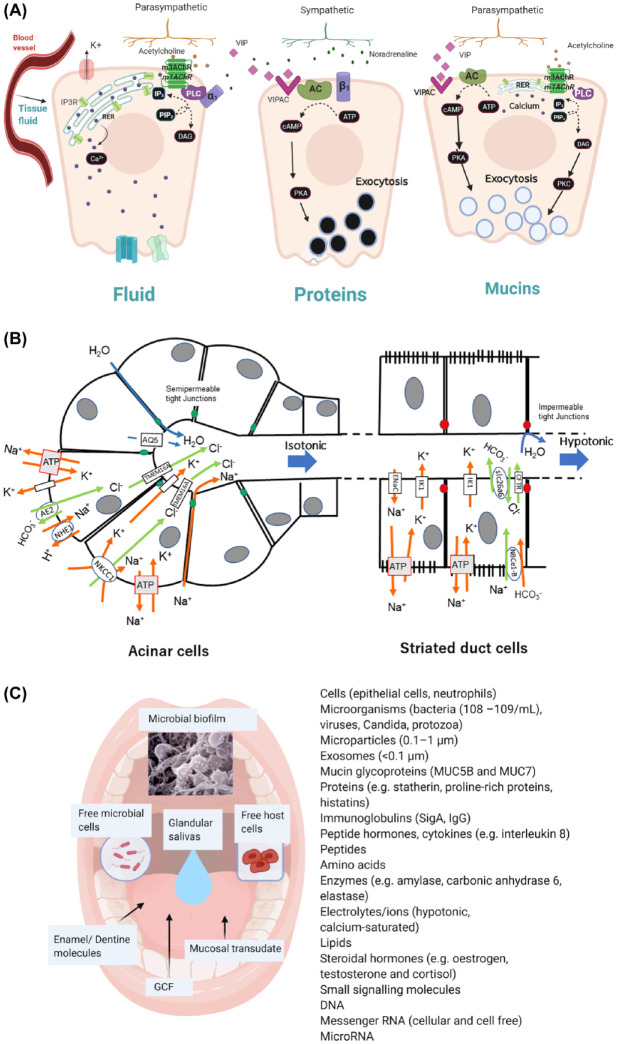Figure 2.
Salivary gland secretion of fluid and protein. (A) Coupling of nerve-mediated stimuli to secretion of fluid, proteins, and mucins by salivary acinar cells. Release of acetylcholine from parasympathetic (ps) nerves activates muscarinic receptors (m3/m1 AChRs), leading to activation of phospholipase C (PLC) and generation of IP3 (inositol triphosphate) from PIP2 (polyinositol biphosphate), binding to IP3 receptor and release of Ca2+ from RER (rough endoplasmic reticulum), increasing intracellular calcium concentration. Noradrenaline (NA) release from sympathetic (sy) nerves can cause a minor secretion of fluid through α1 adrenoceptors. Protein exocytosis is evoked by activation of PKA (protein kinase A) by intracellular cAMP generated from ATP by AC (adenylate cyclase) activated following NA binding to β1-adrenoceptors or vasointesinal polypeptide (VIP) signaling from ps nerves. Exocytosis from mucous acinar cells appears to occur without involvement of sy nerves. Acetylcholine release from ps nerves activates exocytosis through increased intracellular Ca2+ and PKC (protein kinase C) activated by DAG (diacylglycerol). VIP also signals mucous cell exocytosis through PKA activation (see Appendix). (B) Cellular mechanisms of fluid secretion. Acinar cell secretion of isotonic NaCl and water is followed by striated duct cell absorption of NaCl and secretion of KHCO3 in a hypotonic fluid. The principal membrane transporter proteins involved are shown. Acinar cell secretion is dependent on an apical chloride channel (TMEM16A), basolateral sodium, potassium cotransporter (NKCC1), antiports (AE2, NHE1), potassium channels, water channel (AQ5), and paracellular movement of sodium and water, all underpinned by sodium potassium ATPase. Ductal cell absorption of sodium and secretion of potassium through the ENaC and IK1 channels, respectively, is accompanied by secretion of bicarbonate through a combination of the CFTR chloride channel and the slc26a6 antiport, all ultimately dependent on sodium potassium ATPase (see Appendix). (C) Composition of saliva in the mouth. In addition to the saliva secreted by major and minor salivary glands, whole-mouth saliva contains components of non–salivary gland origin, including cells, bacteria and other microorganisms, cellular particles along with molecules contributed from gingival crevicular fluid (GCF), mucosal transudate, tooth enamel, and dentin.

